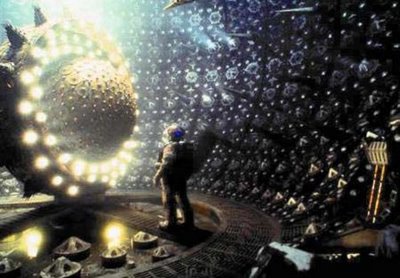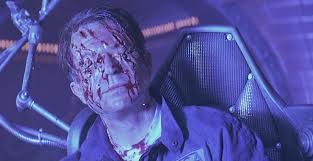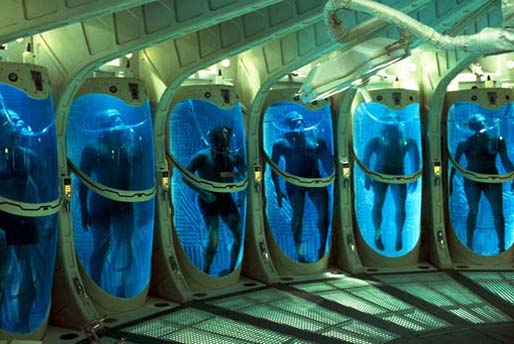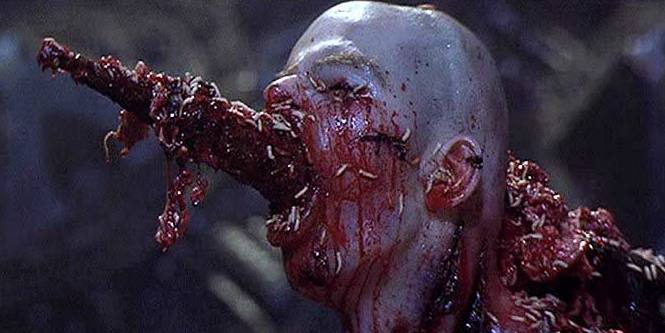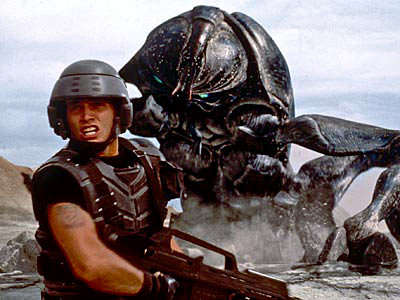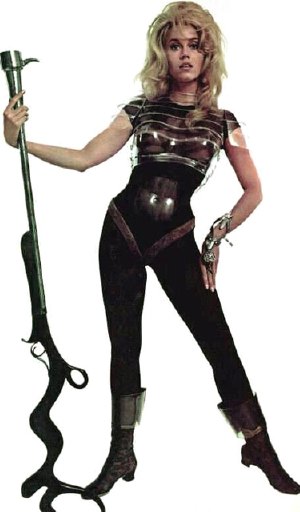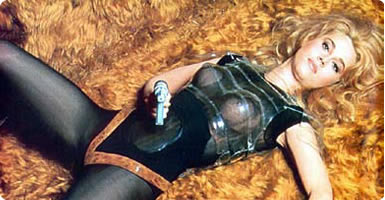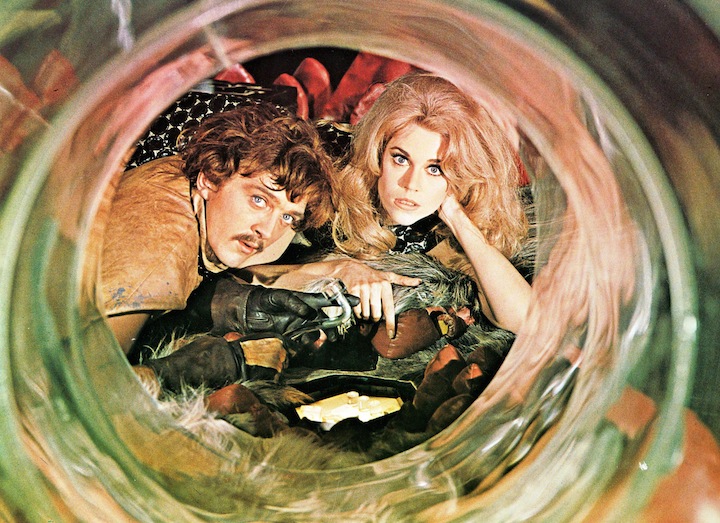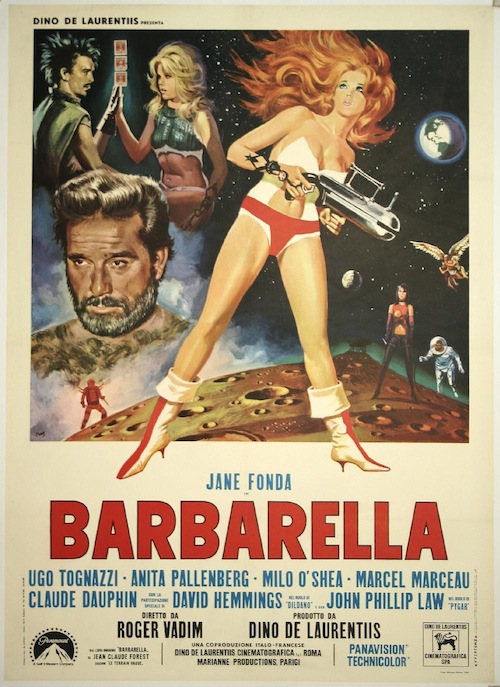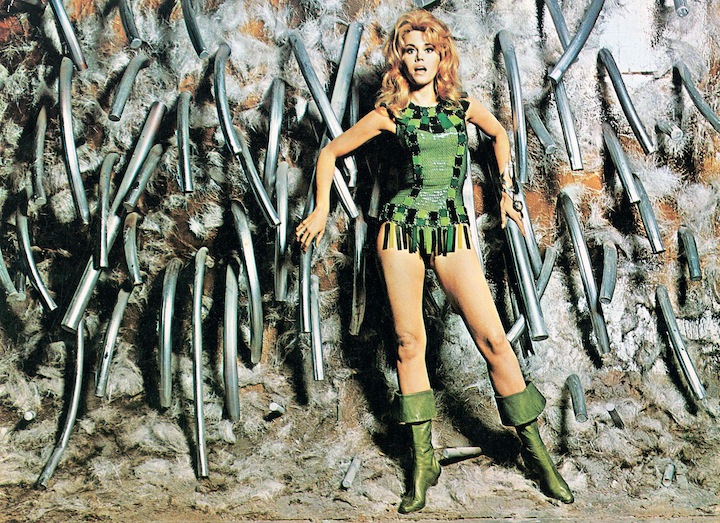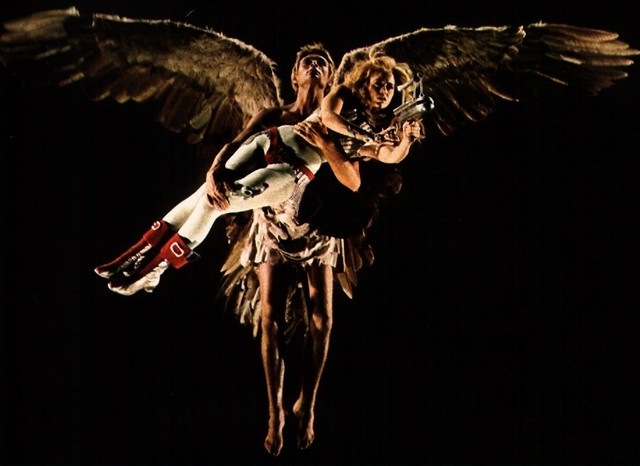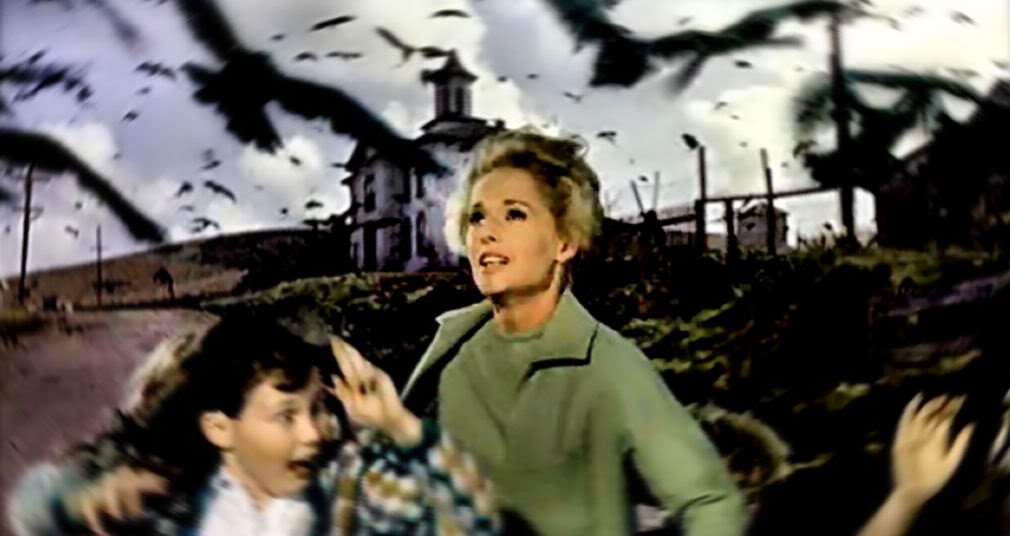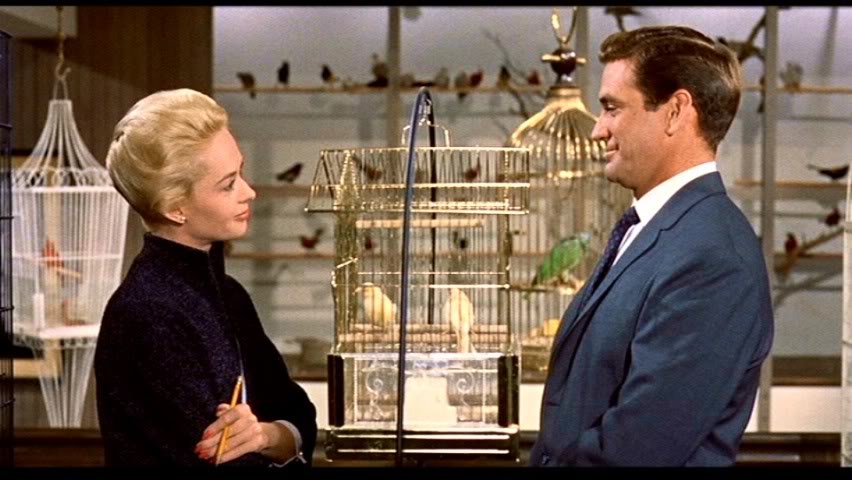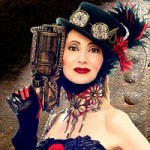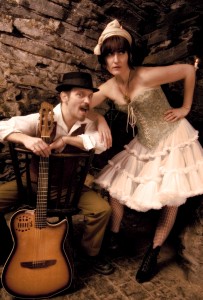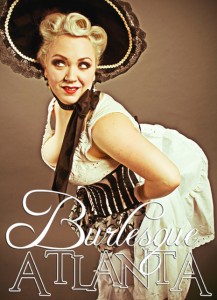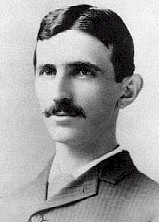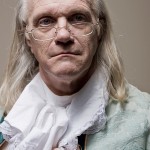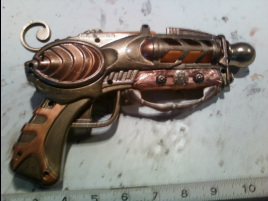 SPACE 1999, the ’70s Gerry and Sylvia Anderson sci-fi series, returns in SPACE 1999: AFTERSHOCK AND AWE, a 168-page graphic novel from New York-based guerilla design studio Blam! Ventures and published by Archaia Entertainment. Sometimes comics reboots are just about nostalgia, but writer Andrew E.C. “Drew” Gaska has plugged up many of the holes in the science, plot and characterization quite masterfully. Let’s admit that the concept of the moon being blown out of earth’s orbit and then traveling around the galaxy at speeds fast enough to take the crew to other planets was a bit far-fetched. But the show also had an amazing cast including then husband and wife Martin Landau (Captain John Koenig) and Barbara Bain (Dr. Helena Russell), who had also teamed up on MISSION:IMPOSSIBLE, veteran character actor Barry Morse (Dr. Victor Bergman) and ultimately sexy Catherine Schell as shapeshifting alien Maya. And the Eagle, well, it was one of the coolest spaceships ever featured in TV science fiction!
SPACE 1999, the ’70s Gerry and Sylvia Anderson sci-fi series, returns in SPACE 1999: AFTERSHOCK AND AWE, a 168-page graphic novel from New York-based guerilla design studio Blam! Ventures and published by Archaia Entertainment. Sometimes comics reboots are just about nostalgia, but writer Andrew E.C. “Drew” Gaska has plugged up many of the holes in the science, plot and characterization quite masterfully. Let’s admit that the concept of the moon being blown out of earth’s orbit and then traveling around the galaxy at speeds fast enough to take the crew to other planets was a bit far-fetched. But the show also had an amazing cast including then husband and wife Martin Landau (Captain John Koenig) and Barbara Bain (Dr. Helena Russell), who had also teamed up on MISSION:IMPOSSIBLE, veteran character actor Barry Morse (Dr. Victor Bergman) and ultimately sexy Catherine Schell as shapeshifting alien Maya. And the Eagle, well, it was one of the coolest spaceships ever featured in TV science fiction!
ATLRetro recently caught up with Drew, a regular on Artists Alley at DragonCon who nurtured his pop culture roots as a veteran consultant for the digital gaming industry including such hit titles as GRAND THEFT AUTO and the Max Payne series. His current passion is breathing new life into some of his favorite licensed properties from childhood. He penned CONSPIRACY OF THE PLANET OF THE APES (Archaia, 2011), an illustrated novel which solves the mystery of what happened to astronaut Landon, who was also captured by the apes and lobotomized. And next up, he’ll be tackling the 1970s TV series, BUCK ROGERS IN THE 25th CENTURY.
Each of these projects is worthy of its own interview, so for now, we’ll stick with Moonbase Alpha. And we should also note that the stunning visuals on the book are thanks to a triumvirate of artists, legendary who produced the book with artistic team Gray Morrow, Spanish artist Miki and David Hueso (GI JOE:STORM SHADOW).
ATLRetro: How did you first encounter SPACE:1999? Was it a childhood favorite or did you discover it later, and what did it mean to you?
Andrew E.C. Gaska: Basically I discovered SPACE: 1999 as a child in the 1970s. My father was a police officer, and he worked until midnight, so I stayed up and watched TV with him during the summer. At 11, it was THE HONEYMOONERS. At 11:30, it was TWILIGHT ZONE. At midnight was STAR TREK. and 1 o’clock was SPACE: 1999. I really only saw the second season of SPACE:1999. I really liked Maya turning into animals. Also, my best friend while growing up had the 24-inch Eagle toy from Mattel. We used to play with it with our STAR WARS toys. I was into all science fiction. I wouldn’t watch anything else except THE HONEYMOONERS and THREE’S COMPANY and science fiction shows. Those were the only choices and really shaped who I am now. Actually…that’s kind of frightening.
I was reintroduced to SPACE: 1999 in the ‘90s by the book, EXPLORING SPACE 1999 by John Kenneth Muir, who eventually did the foreword to AFTERSHOCK AND AWE. It led me to looking for bootleg videotapes of SPACE: 1999, which wasn’t available in any official release at the time. I’d buy bootleg tapes at conventions and got really into it again. Of course, I bought it all on DVD when it came out later – and again on Blu-Ray!
How did Aftershock and Awe come about? Was it you wanting to work in the Space:1999 universe or were you approached?
Back in 2005, I formed BLAM! Ventures, my guerrilla design studio, to acquire licenses for creator-owned properties. The plan was to get the rights, get a book about 80% done, and then shop them around to publishers to get released. I went to Paramount and tried to get STAR TREK. I went to Universal, to Fox… I basically hit all the big ones. Of the ones I hit, PLANET OF THE APES was the only one that gave me a response right away. That led to my CONSPIRACY OF THE PLANET OF THE APES novel and its coming sequel, tentatively called DEATH OF THE PLANET OF THE APES, which I am working on right now. One of the companies that we had tried to get properties from was ITV. We approached them about SPACE 1999 and UFO, but they were going through a lot of changes in their licensing department so we could only got so far, and then the interest would drop. Later we found out they were constantly shifting people around in the licensing department, so I gave up on it for a while. Then ITV decided to reboot the entire department, and while they were doing that, they brought in an outside licensing firm. When that firm was going through some old files, they found all the proposals I had sent them. They contacted me and told me they thought the ideas were good for the brand, so we made a deal.
It’s been very frustrating dealing with licenses and getting clients to understand that what we are trying to do is intended to benefit the license, not steal part of it.
Why is a series set in 1999 that never happened still so relevant now, in your opinion?
A lot of detractors say SPACE: 1999 is just like STAR TREK, but really it’s not. STAR TREK is very positive about the future. Space is well understood by the crew that encounters it. Each episode ties things up neatly. There are not a lot of mysteries or outside forces, whereas in SPACE 1999, every episode is a mystery or there is a greater force in play. It could be God if you will, but there is definitely some guiding force that is responsible for getting them in and out of the predicaments that happen to them. I liken SPACE 1999 to gothic space horror. Space is a terrifying place and you never know what is going to happen to you. There’s more out there that we don’t understand than that we do understand. SPACE: 1999 takes its cues from 2001: A SPACE ODYSSEY [1968] which obviously inspired it greatly.
In regard to the charge that it is no longer relevant, the date was one of the hurdles I had to overcome in writing AFTERSHOCK AND AWE. Most of the advice I received from inside the entertainment industry was all you have to do is change the date. I was like, no, this was supposed to be continuation of the original series. So instead I approached it as an alternate history, like what direction would the world have took if the South had won Civil War or Hitler won WWII. The most obvious difference between the real world and the world of SPACE: 1999 was that we had a moonbase in 1999. It struck me that President Kennedy was so fascinated with the space program, and if he had not been assassinated, perhaps our technology would have gone in that direction rather than in cellular phones and the Internet. What you can do with alternate history is shine a light on specific aspects of our own history that you can’t do otherwise without ruffling some feathers.
Which character was your favorite to delve more deeply into and why?
That definitely would be Professor Victor Bergman. To me, he is the most likable character in science fiction. My friend described him as a “cuddly Captain Picard.” He’s learned, he’s wise, he’s soft-spoken, and he really cares. He’s definitely the heart of Moonbase Alpha, so he was very important to me. One of the things we do in AFTERSHOCK AND AWE is go into his journals, and I had to make sure the writing sounded like his voice. One of the things that was most gratifying for me was hearing from a lot of fans that they could hear his voice in those journal entries. It’s a shame that [the producers of SPACE:1999 Season 2] kicked him off. They even said that they did so because they thought having an old guy on the show turned it into your living room versus a futuristic science fiction show. So there aren’t any old guys in the future?
AFTERSHOCK AND AWE gave you the opportunity to fill in gaps and inconsistencies in the show. Is there a particular gap or inconsistency that gave you the most satisfaction to explain?
Yes, and it’s probably obvious to anyone who has read it: Shermeen Williams. Basically she’s a character who shows up in one episode [A MATTER OF BALANCE] in the second season of the show. In that episode, she is 16 years old. If you do the math based on the amount of days since leaving orbit that’s mentioned in the episode, when the moon left Earth, she would have been 10. I asked myself, what’s a little girl doing on the moon at that time? In the ‘70s, they didn’t think anyone would notice or care. I found a reason and made it relevant for one of the main characters, specifically Victor.
You mean having Victor as Shermeen’s guardian. Why Victor in particular?
Basically he was older and wiser, so everyone was always looking to him for advice. Victor was always the father of Moonbase Alpha. So I thought, why not put him into that role literally by having him take responsibility for a child? It also explained why [Shermeen] is allowed to get away with so much crap in that episode in season 2. It’s because when John looks at her, he sees Victor. If we get to continue the license, one of we’ll be continuing the series 30 years later, and one of the things we’ll be doing is catching up with the characters. We’ll show flashbacks of scenes that happened in the episodes but that you did not see. For example, we’ll see what Shermeen was doing with Victor throughout the series. She was always there behind the scenes in season 1.
I liked what you did with John and Helena to flush out their back story and lay the foundation for the start of their relationship. Can you talk a little about that?
When you watch episode one, BREAKAWAY, there’s a scene that’s also in the comic, where basically Helena gives John a whole bunch of crap for putting his life at risk. He replies smugly, “I didn’t know you cared.” It seemed like some sort of hint at their relationship status. In the second episode, there’s a back story about Helena’s husband who was a lost astronaut. That set up in my mind where she was coming from. In regard to John’s past, in SPACE:1999 EARTHFALL, by E.C. Tubb, who was a brilliant author published in the ‘70s, he established Marcia Gilcrest as John’s fiancée in a short scene in the beginning. When John learns that he has been made commander of Moonbase Alpha again, she says, “look at me, John, I couldn’t possibly live on the moon.” And she couldn’t, because she was a socialite. Having John deal with these issues allowed me to show more depth in his character. And I was also able to use Marcia to show what happens on Earth. When the moon moves out of orbit, she is on Fiji and gets into serious problems when the tectonic plates begin to shift.
Which leads perfectly into the next question. In the graphic novel, you also explore the impact of the moon’s dislocation on the Earth itself. Why did you think that was important to add to the SPACE:1999 saga?
Two reasons. One was that when Gerry Anderson tried to get the show green-lit from Lew Grade, the producer who funded the show, he had a very strong eccentricity. He said he would fund the show only if we never see anything that happens on Earth, because he had seen too many science fiction shows that happen on Earth. When I heard that, I thought, ‘but there was so much that could be told about that!’ Also, people always complained that the science was wonky. There’s a lot of real science about what would happen to Earth if moon was ripped out of orbit. I thought that a great way to ground the story in science was to show the effects if Earth lost the moon. There are other comics in which that happened, and which did not deal with the consequences. That makes it fantasy to me, and we are dealing with science fiction, not science fantasy.
How did you research the science for the book?
The History Channel has a wonderful program called THE UNIVERSE, and there was also a Discovery Channel special called IF WE HAD NO MOON. There are books on the subject as well, but I started with those programs.
Even people who aren’t big fans of SPACE:1999 wax passionately about the Eagle. What’s so special about this spacecraft?
To me, the Eagle is one of the most brilliant designs there’s ever been in science fiction. It looks like it really could be part of the NASA arsenal. It looks like a real space vehicle, but it also looks like it could be a brick in the atmosphere. If you suspend disbelief, it just has such beautiful details such as the spines on its back. In every one of those top 100 spaceship lists on the Internet, the Eagle always is well towards number one. It has endured even more than the show. With AFTERSHOCK AND AWE, we had a chance to bring in new story elements that work well with the ship.
If you can extend the license, where do you hope to take SPACE: 1999 in the other volumes?
Basically the point of AFTERSHOCK AND AWE was to reintroduce the concept to audiences. There are a lot of people who have never seen SPACE:1999 who would be really turned on by it if they have something new. We’re also introducing a new set of characters who are searching for the lost moon in the next series MISSION ALPHA. They’ll be passing through the areas of space that the moon passed through and seeing the ramifications of what happened in the episodes. It’s 30 years later by that time which opens the gate to multigenerational survival stories. We have six graphic novels arced out which take the series to its logical conclusion. You will in the end find out what the mysterious force that guides them is, why the moon was blown out of Earth orbit, and why everything has gone down the way it has throughout the series. Whether or not you’ll get to read that depends on sales, so if you like AFTERSHOCK AND AWE, recommend it to a friend. We’ve got some good stories to tell, and SPACE:1999 does not need to be left to languish any longer.
What else is BLAM! Ventures up to?
My next licensed property that I am working on is BUCK ROGERS IN THE 25TH CENTURY [based on the 1970s TV program]. It will be a series of illustrated novels, similar to THE CONSPIRACY OF THE PLANET OF THE APES book. I’m also working on a sequel to Apes that is due out in 2014. And there are some comic properties I am working on as well, so expect to see a lot from BLAM! Ventures in the future!








